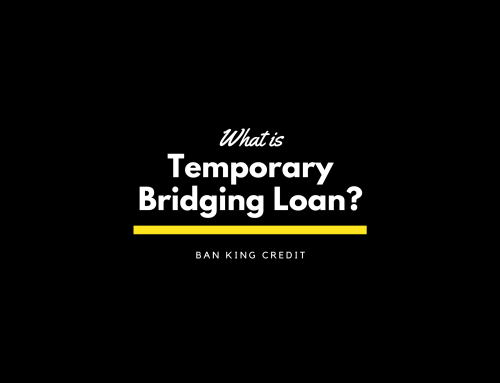In Singapore, 80% of people live in Housing Development Board (HDB) flats. Many want to change their home size as needs change. An HDB bridging loan helps them move smoothly from one HDB to another. This loan gives financial help, connecting the sale of one home with the purchase of another.
Getting a new HDB has its challenges. But an HDB bridging loan makes it easier. It lets you move without stressing over paying two mortgages at once. It’s a short-term help, making sure money doesn’t stop you from getting your dream home. For those in Singapore moving homes, knowing about this loan can make a big difference. It’s the key to a stress-free move to your next home.
Understanding the Basics of HDB Bridging Loans
Looking to move from one home to a new HDB flat? It’s essential to know about bridging loans for HDB. These loans help with home financing by paying for the down payment of a new flat. This happens until you get money from selling your current place. This loan type helps homeowners smoothly move from their old home to a new one. They won’t have to worry about finances in the meantime.
- Bridging loans act as a temporary support. They give you quick access to money. This helps you buy a new home without needing the full amount right away.
- Such loans are short-term, often just a few months. They last until you sell your old property.
- You can pay back the loan in flexible ways. This depends on how much you make from selling your old home.
- The loan terms and conditions are straight to the point. This makes getting financial help faster during this important time.
Eligibility Criteria for an HDB Bridging Loan
Getting a bridging loan for an HDB property means you must meet certain criteria. These are key to making sure you can handle the loan. Let’s look at the age and income needed, and the state of your current property for eligibility for a bridging loan HDB.
Age and Income Requirements
For an HDB bridging loan, your age and earnings are important. You need to be in a specific age group and have an income that fits the loan’s needs. Your age matters because it usually shows how much you can earn and keep a stable job, which affects loan repayment.
Existing Property Conditions
The condition of the property you’re selling matters too. It should be about to be sold, and you might need to use some of its value to get the loan. Knowing these rules helps in getting your loan and managing it without problems.
HDB Bridging Loan Interest Rates Explained
When you think about getting a Housing Development Board (HDB) bridging loan in Singapore, it’s key to grasp the HDB bridging loan interest. People often look at the trade-off between getting financial help now and the future loan costs. For smart choices, it helps to know about interest rate factors. These include the general prime rate, how long the loan lasts, and what the lender decides.
The usual HDB bridging loan interest rates are yearly. But, these loans are meant for short terms. So, you usually pay interest for just part of a year. This extra cost is something you must consider when planning your finances. It’s wise to look around for different rates from lenders. Then, choose what works best for you.
- Comparison shopping: Comparing rates from various banks can save a lot of money.
- Interest calculation method: Find out if the interest adds up daily, monthly, or in another way. This affects the total interest you’ll pay.
- Negotiating skills: Being good at negotiating can get you a better interest rate, especially when many lenders want your business.
Application Process for a Bridging Loan for HDB
Ready to apply for a bridging loan for HDB? The right preparation makes the process smoother. A bridging loan helps with money management and ensures a smooth move between homes. Let’s look at the basic steps and how to start your application.
Documentation Needed
First, having the right documents is key. Banks in Singapore need a lot of documents to check if you qualify. Make sure you have these when you apply:
- Proof of identity (NRIC or Passport)
- Proof of income (Recent payslips and/or income tax returns)
- Bank statements
- Valuation report for the new HDB purchase
- Sale agreement for the existing property
- Credit report
Step-by-Step Application Guide
Applying for a bridging loan involves careful steps:
- Initial Consultation: Talk to a loan officer about your finances and if a bridging loan fits your needs.
- Filling the Application: Fill out the application with all your personal and financial information.
- Document Submission: Give all needed documents to the lender for them to check and evaluate.
- Loan Approval: After they check your documents, if all is good, they will approve your loan. Make sure to read the loan terms before you agree.
- Legal Documentation: You’ll sign legal papers, usually with a lawyer there to help.
- Loan Disbursal: Then, they give you the loan money. This helps with buying your new HDB home.
The Role of Bridging Loan HDB in Your Home Purchase
Looking to buy a home in Singapore? A financial bridging loan can help. It’s a key tool for homeowners moving into a new HDB apartment. This loan acts as a short-term financial “bridge”. It covers the gap between selling your old home and buying a new one.
This type of loan means your dream home doesn’t have to wait. You can cover the new home’s down payment and other costs right away. This is without selling your current home in a hurry for less money.
- Enables immediate access to funds for a down payment on your new HDB.
- Provides ample time for securing the best deal on your existing property sale.
- Facilitates a smooth HDB ownership transition without immediate financial strain.
Calculating Your HDB Bridging Loan Amount
Starting the process of getting an HDB bridging loan involves understanding how much you can borrow. Knowing your financial limits is key, and it’s affected by your loan-to-value (LTV) ratio. We’ll help you figure out a loan amount that fits your financial situation. This way, you’re ready to make smart choices about your home.
Assessing Your Financial Situation
First, take a close look at your money situation. You need to check your income, debts, and any other money responsibilities. Knowing where you stand financially helps you see how much you can borrow safely.
- Analyze your monthly income against your fixed expenses to gauge your disposable income.
- Scrutinize your credit history and score, as they play influential roles in the approval process.
- Take stock of your liquid assets, which can be readily converted to cash if required to cover loan repayments.
Understanding Loan-to-Value (LTV) Ratio
The LTV ratio is important when it comes to loans for buying property. It shows what portion of the property’s price you can cover with a loan. Singapore has rules on the highest LTV ratio for HDB bridging loans. Your financial situation and the property’s value decide the biggest loan you can get and still be within these rules.
- Calculate the LTV ratio by dividing the loan amount by the appraised value of the property.
- Keep in mind regulatory LTV limits, ensuring your loan request adheres to the set maximum percentages.
- Consider the impact of down payments on your LTV ratio, with higher down payments typically resulting in more favorable loan conditions.
Comparison with Other Home Loan Options
Looking into home financing options in Singapore is a must. Doing home loan comparisons helps find the best path for your financial needs. It can feel hard to choose from many mortgage alternatives. But, knowing what each loan benefits you with makes choosing easier.
An HDB bridging loan is unlike regular mortgage products. It’s for people moving from one home to another. This loan helps by covering the new home’s cost until you sell your current one. To see how an HDB bridging loan compares to others, look at these points:
- Speed of Funding: Bridging loans are quick to process, offering fast help when you need it most.
- Short-Term Solution: Bridging loans are meant for short use, to be paid off with the sale of the old home.
- Interest Rates: Bridging loans might have higher rates than long-term loans. But the total interest could be lower since they’re short-term.
Bridging loans might seem the best because of quick funds and flexibility. But, think about the costs and how you’ll pay them back. Taking time for home loan comparisons lets you balance immediate loan benefits with your future finances. This ensures you choose well for now and later.
- Look at the interest rates and fees of different loans.
- Think about how long you’ll need the loan to make the best decision.
- Look at how much you can borrow with different loans.
Repayment Strategies for an HDB Bridging Loan
Finding the right repayment plan is key for homeowners with an HDB bridging loan. It helps ease financial worries and shows clear ways to pay off the loan. We’ll look into the details of choosing between short-term and long-term loan periods. We’ll also discuss the benefits of paying off your loan early.
Short-term vs Long-term Repayment
Choosing the length of your loan is a big decision. Short-term plans have higher monthly payments but cost less interest over time. Long-term plans mean smaller payments each month but more interest overall.
- Short-term repayment plans help avoid long-term debt but require a higher monthly budget.
- Long-term repayment plans make monthly budgets easier but can lead to more interest paid over time.
Impact of Early Repayment
Paying off a loan early can save a lot of interest. It gives the borrower the chance to reduce financial strain and gain more financial freedom sooner. But, it’s crucial to check if there are any early repayment fees with your lender.
- Look at your finances to see if you can afford to pay off your loan early without hurting your budget.
- Talk to your lender about any fees for paying off your loan early.
- Compare the savings from less interest with the cost of early repayment to make sure it fits your financial plan.
Handling Common Challenges with Bridging Loans
Bridging loan challenges and financial obstacles make the journey tough for home buyers. With smart loan management, moving from one home to another gets easier. We’ll show you how to tackle these hurdles and make smart moves.
- Aligning Sale and Purchase Timelines: Matching the timing of selling your old house with buying a new one is hard. Work with real estate experts for a faster sale. And make sure everyone knows your deadlines.
- Loan Repayment Planning: Having a plan for paying back your loan is vital. Think about your money flow and sale earnings. Then, create a repayment plan that works.
- Understanding Loan Terms: Get to know your loan’s rules well. Pay attention to interest rates, how long the loan lasts, and how you’ll pay it back. This helps in managing your loan better.
- Contingency Measures: Even with good planning, the property market can surprise you. Have backup plans, like saving extra money or thinking about renting, if your house sale gets delayed.
- Risk Assessment: Look into risks like market changes or interest rate hikes. Getting advice from financial experts on how to handle these risks can help a lot.
Success Stories: How a Bridging Loan Helped Others
The path to owning a home in Singapore is full of success stories thanks to bridging loans. These stories show how people made it through the property market. Borrower experiences shine a light on bridging loans as crucial support during property transitions. The stories below show how these loans truly change the game in property financing.
- A family waiting to sell their HDB flat needed funds for their dream home. A bridging loan helped them with the down payment and more, making their move smooth.
- An entrepreneur needed quick cash for a property deal. A bridging loan filled the gap swiftly, leading to a great return on the investment.
- A young couple was stuck when their buyer’s loan was delayed. With a bridging loan, they could buy their new home without waiting, avoiding extra costs.
Expert Tips on Managing Your Bridging Loan
Getting a bridging loan is exciting yet challenging. It’s key to know valuable loan management advice and have good financial planning skills. Being able to negotiate loan terms also helps get better conditions for your loan. Let’s look at effective ways to handle your bridging loan with advice from top professionals.
Financial Planning Advice
Before you get a bridging loan, it’s vital to plan carefully, say financial experts. Start by closely looking at your monthly income and expenses. This helps you make a budget that lets you pay back the loan without hurting your way of living.
Make sure you’re financially ready by:
- Checking your savings to have an emergency fund that’s not for the loan.
- Keeping your debt-to-income ratio low to stay credit-healthy.
- Thinking about different financial what-ifs, like if selling your current home takes longer than expected.
Final Thought – Get an Instant HBD Bridging Loan in Singapore
Ban King Credit Bridging Loan is a reputable financial institution in Singapore that offers a range of credit solutions, including HDB bridging loans. These loans are designed to bridge the gap between the sale of your current property and the purchase of your new one, providing you with the funds you need to make a smooth transition.
The advantage of opting for an HDB bridging loan from Ban King Credit is that it allows you to secure your new property without having to wait for the sale of your existing one. This means that you can make an offer on your dream home without worrying about missing out to other potential buyers. The loan is disbursed to you quickly, giving you the financial flexibility to confidently negotiate and close the deal.
Conclusion
In this guide, we talked about how an HDB bridging loan can help homeowners. It’s key for those moving between properties. We discussed a HDB bridging loan summary. This summary highlights how the loan offers financial aid. It helps folks buy a new HDB flat while they sell their old home.
Making smart financial decisions means knowing all your options. That includes understanding HDB bridging loans. We covered eligibility, interest rates, how to apply, and how to pay it back. This guide aims to give you the tools to use bridging loans well. These loans are great for flexibility, short-term relief, and getting a new home without financial worry.
Lastly, we suggest homeowners do their homework and get expert advice. Consider how an HDB bridging loan fits your financial needs. We hope this info helps you plan better. That way, you can have a smooth transition to your next home in Singapore.
FAQs – HBD Bridging Loan
1. What is an HDB bridging loan?
An HDB bridging loan is a temporary financing solution that helps you fund the downpayment for your new HDB flat while waiting for the sale of your existing one. It acts as a bridge to cover the purchase between your current and new property, ensuring a smooth transition.
2. How much can I borrow with an HDB bridging loan?
The maximum loan amount is typically limited to the cash proceeds you’ll receive from the sale of your current flat. This amount, minus the outstanding loan balance and any CPF refunds you need to repay, will form the basis for your HDB bridging loan.
3. How long can I repay the HDB bridging loan?
The loan’s tenure is usually limited to the duration between the sale and purchase of your HDB flats. This typically ranges between six months to one year. It’s essential to plan your finances carefully to ensure timely repayment and minimize interest charges. An HDB bridging loan can provide a temporary financial boost during the transition from your old HDB flat to your new one. Be sure to consult with your bank or financial institution to understand their specific terms and conditions before deciding if it’s the right option for you.






